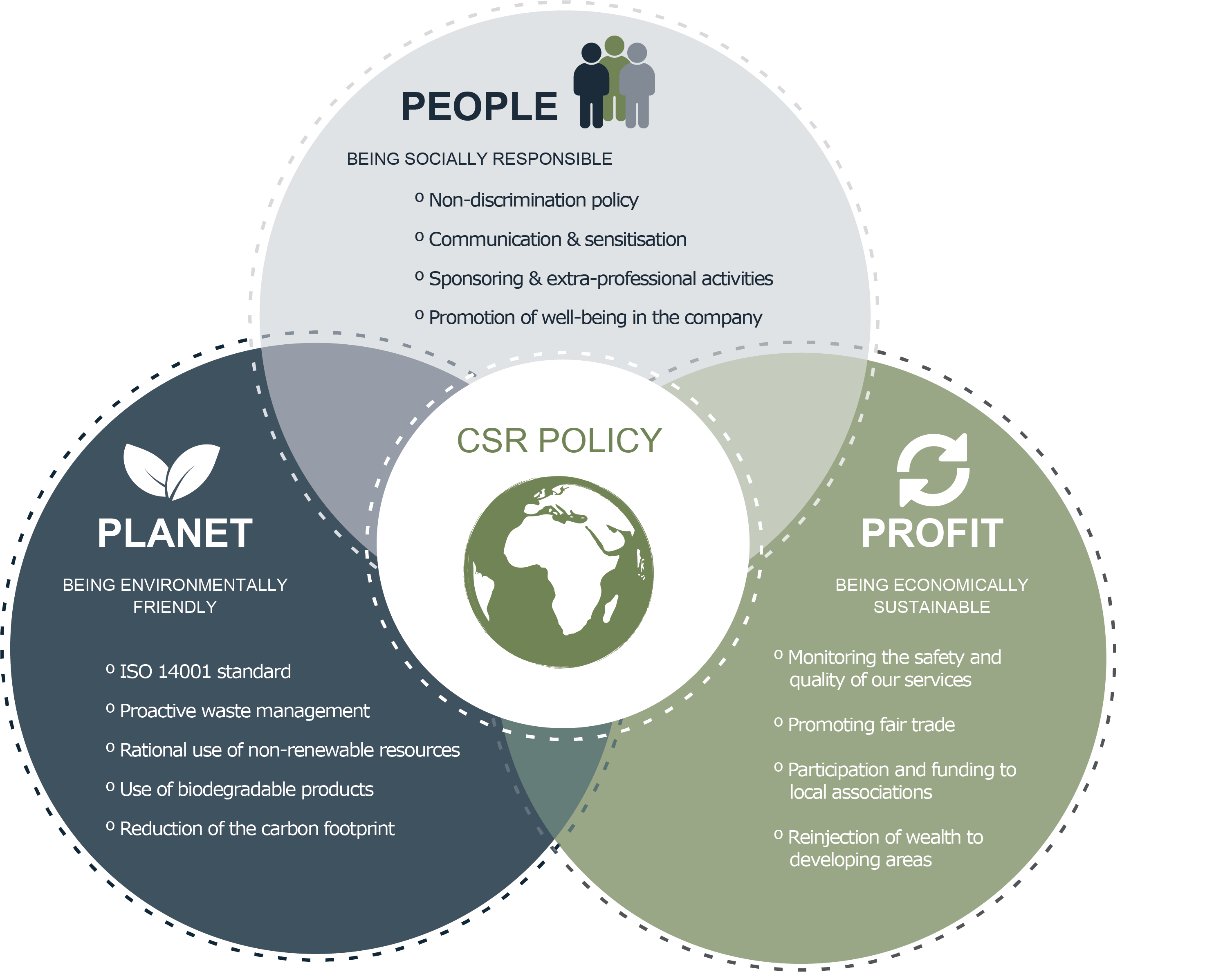Lab Luxembourg S.A. adopts a transparent and ethical behaviour with regard to integration of its social, environmental and economic responsibilities in its daily management.
The CSR (Corporate Social Responsibility) policy is part of the company’s general and voluntary guidelines to limit its negative social and environmental impacts while combining the needs of its employees and third parties with those of the company, with the aim of acting responsibly.
Discover our CSR policy
THE CSR PILLARS AT LAB
SOCIAL RESPONSIBILITY
Being socially responsible
- Equal opportunity employer
- Communication within the company and awareness campaigns
- Employee training and knowledge development
- Promoting extra-professional activities
- Promoting employees’ well-being at work
ENVIRONMENTAL RESPONSIBILITY
Being environmentally friendly
- Following ISO 14001 and SuperDrecksKëscht standards
- Proactive waste management – recycle, reuse, rethink
- Calculating and reducing our carbon footprint
- Rational use of non-renewable resources
- Biodegradable and compensated products
- Offsetting carbon release
ECONOMIC RESPONSIBILITY
Being economically sustainable
- Monitoring the quality of our services
- Promoting local businesses and products
- Implementing eco-responsible and fair trade consumption
- Fair distribution and investment of wealth
- Participation and funding of local associations
OBJECTIVES AND PROJECTS
- Obtain the ESR label.
- Achieve less than 1020 kg of evacuated waste per year.
- Achieve less than 180 kg of recycled waste per year.
- Achieve less than 240,000 kWh of consumed electricity at the DTH per year.
- Achieve less than 556,000 kWh of consumed electricity in the datacentres per year.
- Achieve less than 32,700 pages of printed documents per year (colour and black/white).
- 80% of the products used at the DTH must be ecofriendly.
- Obtain more than 70% participation rate in sensitisations.
Long-term objectives
- Maintain ISO 14001 certification.
- Keep the SDK label.
- Produce less than 1,600,000 kg of CO₂ emissions per year.
- Reaching carbon neutrality around 2035.
- Use 100% renewable energy for the production vehicles, within the next 3 years.
- 100% of the energy used is required to come from green energy.
- 100% of the waste requiring monitoring is traced via the associated Waste Slip.

